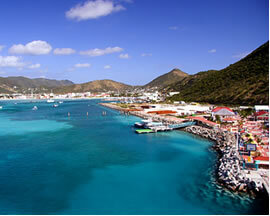With a territorial extension of 2.5 million square kilometers, Sudan is the largest country on the African continent. Its territory is bordered by the Red Sea and has borders to the north with Egypt, to the northwest with Libya, to the west with Chad and with the Central African Republic, southwest with the Democratic Republic of Congo, south with Uganda, southeast with Kenya and east with Eritrea and Ethiopia.
Since gaining independence in 1956, the country has faced a civil war involving the Muslim government and Christian guerrillas. This confrontation between different religious groups caused the death of more than 2 million inhabitants, in addition to 3 million refugees. The conflicts in Darfur were considered the worst humanitarian crisis of the 21st century. rapes, murders, robberies, among other perverse attitudes involving different ethnic groups.
Sudan is also accused by the United States of funding Islamic terrorist groups, and in 1998 an alleged chemical weapons factory was bombed by US troops.
According to data released in 2010 by the United Nations (UN), the national Human Development Index (HDI) is 0.379 (low). The inhabitants suffer from long periods of drought, a fact that intensifies malnutrition in various parts of the country, as food crops are extremely affected.
Agriculture is developed in regions close to the Nile River watershed, which guarantees the irrigation of plantations. This activity is responsible for absorbing 80% of the national workforce and corresponds to 40% of the Gross Domestic Product (GDP). The country's economy has been driven by the great wealth of the soil, in which there is the exploration of oil, natural gas, gold, uranium, copper, nickel, lead, etc.
Do not stop now... There's more after the advertising ;)

Sudan refugee camp
Sudan data:
Territorial extension: 2,505,813 km².
Location: Africa.
Capital: Khartoum.
Climate: Arid tropical (north) and tropical (south).
Government: Presidential Republic (military dictatorship since 1989).
Administrative division: 26 states.
Languages: Arabic (official), English.
Religions: Islam 71.4%, Christianity 16.3% (10.2% Catholics other 6.1%), traditional beliefs 11.1%, no religion and atheism 1.2%.
Population: 42,272,435 inhabitants (Men: 21,285,349; Women: 20,987,086).
Composition: Sudanese Arabs 39%, indigenous ethnic groups 58% (main: Bejas), other 3%.
Demographic density: 16.8 inhab/km².
Average annual population growth rate: 2.2%.
Population residing in urban areas: 44.36%.
Population residing in rural areas: 55.64%.
Undernourished population: 21%.
Infant mortality rate: 67 deaths per thousand live births.
Life expectancy at birth: 57.8 years.
Households with access to clean water: 70%.
Households with access to a health network: 35%.
Human Development Index: 0.379.
Currency: Sudanese Dinar.
Gross Domestic Product (GDP): $58.4 billion.
GDP per capita: $1,443.
External relations: World Bank, IMF, UN, AU.
By Wagner de Cerqueira and Francisco
Graduated in Geography
Brazil School Team
countries - geography - Brazil School


